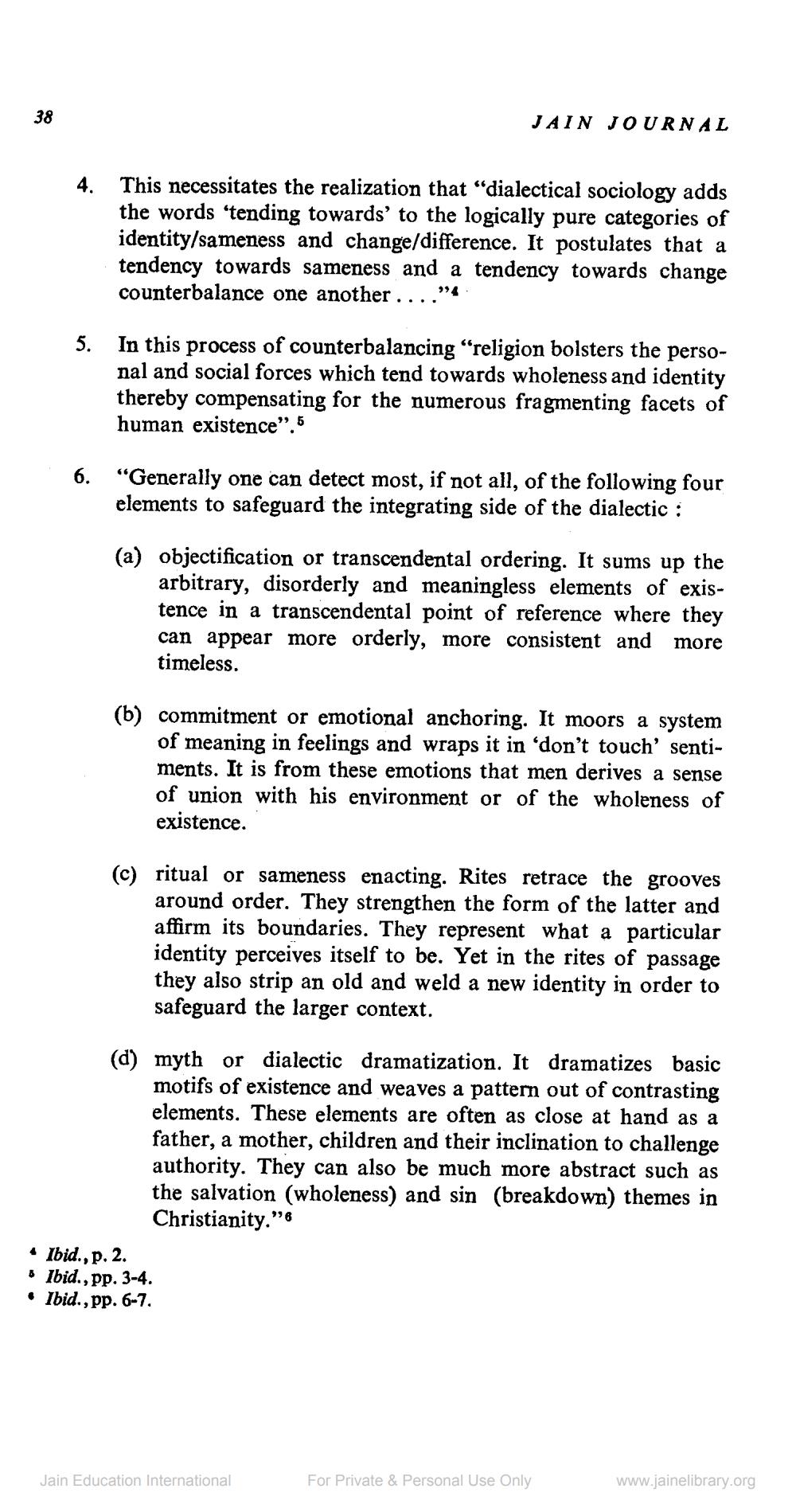________________
38
JAIN JOURNAL
4.
This necessitates the realization that “dialectical sociology adds the words 'tending towards' to the logically pure categories of identity/sameness and change/difference. It postulates that a tendency towards sameness and a tendency towards change counterbalance one another ...."
In this process of counterbalancing “religion bolsters the personal and social forces which tend towards wholeness and identity thereby compensating for the numerous fragmenting facets of human existence". 5
"Generally one can detect most, if not all, of the following four elements to safeguard the integrating side of the dialectic :
(a) objectification or transcendental ordering. It sums up the
arbitrary, disorderly and meaningless elements of existence in a transcendental point of reference where they can appear more orderly, more consistent and more timeless.
(b) commitment or emotional anchoring. It moors a system
of meaning in feelings and wraps it in 'don't touch' sentiments. It is from these emotions that men derives a sense of union with his environment or of the wholeness of existence.
(c) ritual or sameness enacting. Rites retrace the grooves
around order. They strengthen the form of the latter and affirm its boundaries. They represent what a particular identity perceives itself to be. Yet in the rites of passage they also strip an old and weld a new identity in order to safeguard the larger context.
(d) myth or dialectic dramatization. It dramatizes basic
motifs of existence and weaves a pattern out of contrasting elements. These elements are often as close at hand as a father, a mother, children and their inclination to challenge authority. They can also be much more abstract such as the salvation (wholeness) and sin (breakdown) themes in Christianity.”
• Ibid., p. 2. * Ibid., pp. 3-4. • Ibid., pp. 6-7.
Jain Education International
For Private & Personal Use Only
www.jainelibrary.org




